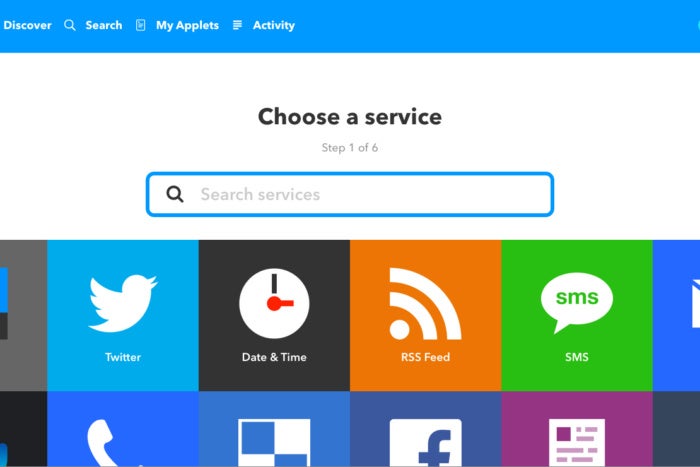
Your smart home can always be made smarter. One popular way to increase its IQ is to use a free automation service such as IFTTT or Stringify. These multipurpose tools can link all of your smart-home systems—from lighting to thermostats to appliances to smart speakers and more—in ways that the device manufacturers might never have considered.
Imagine the lights in your bedroom turning on a very low level and growing brighter as the sun rises, while the day’s weather forecast is delivered to your smartphone and your smart speaker begins reading the day’s news bulletins and you’ll have an idea of the possibilities. The companies that designed each of those products and services likely never thought of their products working together in a such a fashion, but that doesn’t mean they can’t.
So which service is best for connecting all your connected devices? We decided to settle the question using an Amazon Echo, a Ring Video Doorbell, an Arlo Pro home security camera and a set of Philips Hue lights in a few common smart-home scenarios.
- Connecting all the things
- Getting started
- Head to head
- Which is best?
Connecting all the things
Both IFTTT and Stringify connect multiple services and devices in an automated process, but they differ in just how they get you from point A to point B, or even point A to point C to point D.

Michael Ansaldo / IDG
IFTTT (the acronym stands for If This Then That) uses applets, until recently known as “recipes.” The difference between an applet and a recipe is more than a name. Recipes automated simple trigger-action processes by monitoring a single channel for an event: an incoming email in your Gmail account that has an attachment, for example. When that condition was met, IFTTT would perform a single task, such as saving the attachment to Google Drive.
Applets still do this, but they have the added ability to make a single trigger produce multiple actions—if this, then that and that and that. The rub is this new capability is currently available only to product manufacturers, service providers, and an advanced class of users it calls Makers. So for the time being, if you don’t fall into one of these buckets, you’re limited to IFTTT’s original functionality, though as we’ll see you can work around this restriction.

Michael Ansaldo / IDG
Stringify calls its automated processes “flows.” Flows also watch an account or device, called a “thing,” to perform a desired action when specific conditions are met. But Stringify allows for much more complex processes than IFTTT. A single flow can trigger multiple actions.
For example, you could create a flow that tells the Philips Hue lights in your living room to turn on when your Neatmo security camera detects motion, and then turn the lights off after 10 minutes has elapsed. Flows can also include one or more conditions: so you could add a stipulation that the Flow above runs only at night when, say between 10:30 p.m and 6 a.m.
IFTTT and Stringify both allow you to create shortcuts to your applets and flows, respectively. IFTTT uses button widgets (formerly DO Recipes); these add widgets for your Applets to the home screen of your iOS or Android device, so you can trigger them with one tap. Stringify uses colored buttons to trigger your flows in much the same way. The biggest difference is how much bang you get for your button, with Stringify giving you more thanks to the flow’s multi-action capability.
[Source”cnbc”]




